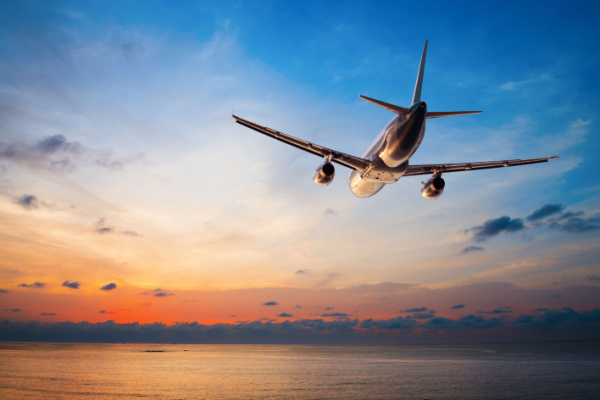Extreme Air turbulence has been in the news lately. Last weekend, 36 passengers were injured, 11 seriously, when a Hawaiian Airlines flight encountered severe air turbulence. Then the very next day, five people had to be hospitalized when a United flight to Houston suddenly dropped 500 feet without warning. As we enter into an expected busy air travel holiday weekend, it has many concerned about what they may encounter on their next flight.
Unfortunately, it’s a phenomenon that pilots have often can’t see coming. In the recent incidents, still under investigation, either plane may have run into clear air turbulence, which is caused by wind patterns with no visible warning in the sky or ability for aircraft radar to pick it up. CAT is a sudden and often unexpected severe turbulence that appears in cloudless areas and results in the aircraft being buffeted violently. It occurs as a result of wind shears in the jet stream that cause sudden changes in direction and speed of the wind.
Weather forecasters also can’t help warn pilots, says Thomas Guinn of Embry-Riddle Aeronautical University in Daytona Beach, Florida. “It’s probably one of the most challenging forecast problems we have right now for aviation meteorology,” he said.
Pilots rely on data from weather balloons and other pilots to predict turbulence but there is less information on conditions over the ocean than for over places like the continental U.S., says Erik Eliel, a commercial airline pilot. “It becomes less predictable when you get to areas of the world when you have less data gathering capabilities,” Eliel, who is also president of Radar Training International Inc., a company that trains pilots in the use of on-board weather radar systems.
Forecasters are generally able to do a good job, but it’s not a perfect science, he said. “Until it becomes a perfect science, then you’ll always have these types of situations,” he said.
A 2016 study of fatal weather-related general aviation accidents in the US shows that weather, including turbulence, was a cause or contributing factor in 35% of cases. This is one reason why many aviation regulations around the world state that all passengers and crew must have their seatbelts fastened prior to aircraft moving, and can only be unfastened once the threat of turbulence, among other hazards, is lessened. Turbulence is a major concern for airlines and passengers, as evidenced by the recent news coverage of the subject.
As Jim Foerster, one of just 198 certified consulting meteorologists (CCM) in the world, who serves as director of meteorology services for DTN, the largest global business-to-business weather consulting organization, explains, while flights are en route to their destination they may encounter several types of turbulence, including CAT. Because it occurs without any visual representation, CAT is virtually impossible to detect with onboard instruments or the naked eye, making it difficult, if not impossible, for a pilot to avoid.
This type of turbulence is not only a nuisance for passengers but can also cause extensive damage to aircraft and can injure passengers and flight crews. During the cruise stages of flight, CAT can cause the aircraft to suddenly shift hundreds of feet, sending items flying around the cabin.
Turbulence is estimated to cause more than $499M each year in damage and delays for the airlines and other aviation businesses, which makes avoiding it a priority. Businesses are investing in systems from private weather companies that can detect CAT using advances in technology so that flight planners and pilots can avoid it.
While previous technology has made CAT difficult to predict and detect, new advances in technology that result in more sophisticated weather models and algorithms allows accurate forecasting of the turbulence. These advances allow increased visibility of CAT from all major flight cruising levels. These systems also provide the ability to integrate high-resolution, gridded and frequently updated turbulence potential information into flight management and planning systems.
This information allows airlines to file flight plans for routes that keep passengers and crew safe, maximize efficiency and reduce costs. Having near-pinpoint accuracy in detecting CAT allows pilots to make smaller, calculated shifts in the route to avoid the hazardous turbulence (and other weather conditions) rather than having to fly out of their way for hundreds of miles. Airlines can use this to minimize costs by getting passengers and cargo from point A to point B as safely, quickly and efficiently as possible.
These advances in technology being offered by private weather companies have become even more important in recent years and will continue to prove necessary. A recent study by the University of Reading in the UK is predicting a 149% increase in severe air turbulence in the coming years due to stronger jet streams that allow ‘wavier’ patterns to form, resulting in increased occurrences of air turbulence.
As airlines and other aviation business continue to look at ways to maintain safe flights while maximizing efficiency, the need for new technology that can detect various forms of turbulence, including CAT, will continue to grow. As the need increases, private weather companies will also continue to research and develop these advances in technology.
In the meantime, the best advice for holiday travelers is to keep your seatbelts fastened, and items stored safely beneath the seat or in the overhead bins during the flight. And if traveling with young children, bring a car seat and strap them into their own seat, instead of holding them on your lap. Oh, and pay attention when the flight attendant rattles off those safety protocols pre-flight. They could just save you a trip to the emergency room.
—
Photo Credit: Iryna Rasko / Shutterstock.com
